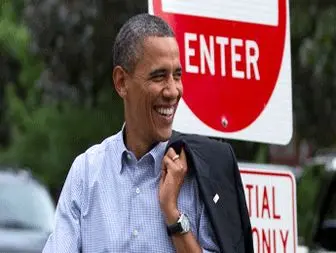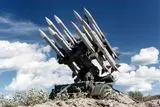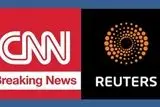
Conversations with two dozen current and former Obama associates over the past two months revealed a series of fault lines - dangerous but by no means insurmountable - that add a degree of difficulty to an already tough task of finishing off Mitt Romney.
They also illustrate the paradoxes of Obama as a candidate, a self - described idealist bent on elevating politics who is embracing one of the most negative presidential elections ever.
Here are six campaign fault lines:
۱. The Insiders vs. The Outsiders
Like Google, Facebook or any other wildly successful startup, Obamaland has its own hierarchy, a tacit ranking of the people around the president based on the date they committed to his cause and the level of trust Obama invests in them.
Most of the people closest to the president signed on with Obama before it became obvious he had a chance of becoming president. That core — David Axelrod, Valerie Jarrett, David Plouffe, Pete Rouse, Dan Pfeiffer, Robert Gibbs — forms an inner citadel inside the Obama camp from which “outsiders” are largely excluded.
It’s an order of battle that proved highly effective in ۲۰۰۸. Whether it will prove quite so effective this time around is very much an open question.
When deputy campaign manager Stephanie Cutter, who straddles that insider - outsider line more precariously than anyone in Obama’s camp, began emerging as a major force in Obama’s Chicago headquarters, many of Obama’s original crew viewed her as an obstreperous upstart challenging Obama’s no - drama order. It probably didn’t help that Cutter can be brutally blunt and asserted her authority outside the ۲۰۰۸ hierarchy, people close to the situation said in interviews for a new e - book “Obama’s Last Stand, ” a joint venture between POLITICO and Random House.
Cutter was brought into Obama’s inner circle by one of the founding fathers: Axelrod. She has tackled some of Obama’s toughest problems in the past four years, from Michelle Obama’s image to messaging on health care reform. But when she briefly clashed with Axelrod this spring, several insiders made clear in the interviews that they still regard Cutter as an outsider.
When a crisis hits, Obama tends to pull the most trusted members of his inner group even closer to him. That’s why so many Obama insiders are coming back into the fold as the race wears on.
Gibbs seemed to be on the outs over a much - hyped feud with Jarrett and a clash with the first lady revealed in Jodi Kantor’s book “The Obamas” earlier this year. But the president himself never soured on his longtime spokesman, according to several people close to the situation. He was pleased when Gibbs increased his role as a surrogate and adviser this spring.
In fact, when senior Democrats considered a big name to run the foundering Obama - friendly super PAC Priorities USA Action early in the year, the first person they considered was Gibbs — who wasn’t interested. Another old - team rehire was Jen Psaki. Obama wooed her from a lucrative private - sector job — without the knowledge of many staffers in Chicago — for the taxing task of traveling campaign press secretary.
The flip side is that core operational staffers, people who would be regarded as foundational players in any other organization, have never quite been granted access to the innermost circle of trust. That second group includes otherwise powerful advisers — such as former chief of staff Rahm Emanuel, campaign manager Jim Messina and Cutter — battle - tested Obama loyalists who, nonetheless, came aboard later than the first group.
When things go awry, people perceived as outsiders are cut a little less slack. When another outsider - insider, ad consultant Jim Margolis, invited a New York Times reporter to his office for a story on negative advertising, Obama was ticked off — to the point where Margolis felt compelled to send a mea culpa email to senior staff.
۲. Washington vs. Chicago
The decision to keep the Obama headquarters in Chicago was a no - brainer. It rekindles the youthful, hopeful vibe of ۲۰۰۸ — and keeps the president’s advisers away from the prying eyes of the national media.
But there have been times, especially early in the campaign, when the ۷۰۰ - mile gap between Prudential Plaza and the West Wing has proven problematic.
After things got off to a stumbling start in March, Obama began telling his top West Wing political advisers — in no uncertain terms — that they were hanging around the house a little too much. He wanted as much talent in Chicago as often as possible to better coordinate scheduling and messaging — to “tighten” it all up, in his catchall description.
Senior White House staffers started to show up in Chicago more frequently, a trend that officials said in interviews wasn’t “an intervention” but an attempt to better coordinate the actions of two Obama power centers located far apart.
At first, Obama quietly dispatched Rouse, who was close to Messina, to Chicago to help organize mid - level staff and report back on what he thought needed to be fixed in Chicago.
Soon, he was accompanied by Plouffe, Pfeiffer and White House deputy chief of staff Alyssa Mastromonaco, who became regular attendees at the Wednesday weekly strategy meeting in Messina’s office.
They were joined by Axelrod, Cutter, consultant Larry Grisolano, Democratic National Committee Executive Director Patrick Gaspard and deputy campaign managers Jen O’Malley Dillon and Julianna Smoot. Gibbs would be added later.
۳. Obamaland vs. Joe’s World
The tension between Obama’s team and Joe Biden’s operation across West Executive Drive has been one of the more surprising elements of the ۲۰۱۲ campaign. Biden — despite thus - far fictional rumors he’ll be replaced by Hillary Clinton — is a valuable surrogate and regarded as a team player.
Yet despite his reputation as an affable, gaffe - prone bomb - thrower, he remains an ambitious man, intent on playing an important insider’s role — and maybe, just maybe, making himself part of the ۲۰۱۶ conversation. And that has occasionally caused friction with the West Wing, especially when it comes to staffing.
For the past couple of years, Biden has had his eye on Kevin Sheekey, the canny political adviser to New York Mayor Michael Bloomberg. Biden has considered Sheekey for two or three prominent posts, including his chief of staff and traveling campaign aide — only to be shot down by Plouffe and Axelrod, who viewed Sheekey as potentially disloyal.
Biden was miffed — and when he pitched Clinton White House veteran Steve Ricchetti for the campaign job, Obama’s team shot that down, too, on account of Ricchetti’s former work as a lobbyist. Eventually, Obama overruled them.
Then there was Biden’s now notorious declaration of support for same - sex marriage in early May — which took Obama’s team by surprise. Senior aides said in interviews that Biden had secretly counseled Obama to avoid the issue, to dodge a backlash among swing - state Catholics. The president was aggravated. Plouffe was furious.
Biden was contrite but hurt. He apologized — profusely — during a face - to - face meeting in the Oval Office. But he also wanted Obama to know he was a team player.
۴. Obama vs. other Democrats
It’s no secret that Obama’s relationship with other Democrats has never been great.
On the one hand, he’s sought to distance himself from Congress, the most reviled institution in American public life. On the other, he’s dispatched his messaging gurus, Axelrod and Plouffe, to share their wisdom with the Hill.
In many instances, congressional Democrats have greeted this effort with a collective yawn and have come to view Obama’s team as a bunch of self - serving dilettantes who know little — and care less — about what it takes to hold or capture majorities. Senate Democrats have, in particular, been irked by Obama’s unwillingness to raise money on their behalf and less - than - enthusiastic logistical coordination when he does.
Obama enjoys a solid relationship with Senate Majority Leader Harry Reid(D - Nev.) — and Reid has gleefully hammered Romney over his refusal to release multi - year tax returns. But Obama’s team has repeatedly chafed against Hill Democrats who want the president to make last - minute policy adjustments that will make life easier on their Senate and House candidates.
In mid - ۲۰۱۲, congressional leaders met in the Oval Office to urge Obama to blunt looming defense cuts, which might result in defense industry job losses.
Obama candidly told those gathered, including House Minority Leader Nancy Pelosi(D - Calif.), to reorient their priorities — from them to him.
“Look, guys, ” he said, according to a person briefed in detail on the interaction. “I plan on winning this race. If I don’t win, then anything we say now doesn’t matter. I plan on winning this race. So let’s figure out how to win this race. ”
۵. Obama ’۰۸ vs. Obama ’۱۲
“Whatever happened to hope and change? ” CBS “Face the Nation” host Bob Schieffer asked Gibbs during a sit - down earlier this summer.
That’s a dangerous and disturbing question for an Obama campaign grappling with a billion - dollar GOP assault bent on painting Obama as a failed president.
Not one of the people interviewed for “Obama’s Last Stand” said the president had major qualms about the intensely negative campaigning required in ۲۰۱۲. He thinks Romney is a menace to the country and will do what it takes, within bounds, to beat him.
But Obama is acutely aware of the strain that the attacks on Romney put on his own good - guy image — a rock - steady personal approval rating that has proven to be his biggest electoral asset this year.
And discordant signs of the difference between ۲۰۰۸ and ۲۰۱۲ — the mountaintop vs. the muck — are everywhere. In the week leading up to the Obama campaign’s official kickoff rally May ۵ at Ohio State University’s basketball arena in Columbus, Obama’s campaign had put out a maximum effort to fill the Schottenstein Center’s ۱۸,۰۰۰ seats.
About ۴,۰۰۰ empty seats ringed the upper deck — seats Obama had to stare at during his fired - up - and - ready to go speech.
Obama, as always, put the best face on things. But there have been signs the strain is wearing on him — and he has increasingly sought refuge in sports and other diversions. Over the summer, for example, Valerie Jarrett quietly set up a salon for Obama to discuss social media and civility in online political discourse with a hand - picked group of thinkers and technology experts that included Aspen Institute head Walter Isaacson.
Obama lingered at the dinner for hours and seemed as relaxed as he’d been in months, according to an attendee.
۶. Family vs. Politics
Family is a tricky issue for Obama — whose meteoric rise began with a memoir about his troubled father.
Like all presidential parents, he’s intensely protective of his wife and kids. And like most politicians, he’s not above deploying them when the need arises.
Michelle Obama — with her high approval ratings and working - class roots — is one of the president’s most valuable surrogates on the trail.
Barack Obama has ferociously guarded the privacy of daughters Sasha and Malia. But he’s brought them into the conversation from time to time, citing the girls in a White House interview earlier this year as he explained his decision to support gay marriage.
He has a hair trigger when others talk about his kids.
When Rick Santorum publicly questioned Obama’s decision to allow ۱۳ - year - old Malia to travel to drug - ravaged Mexico in March, Obama exploded. He ordered Messina to reach out to the Santorum campaign — a rare case in which Obama actually lost his composure.
"It was made clear to me that the president was very, very upset about this and wanted to get the message to the senator that families were out of bounds,” said Santorum aide John Brabender, recounting the exchange.















